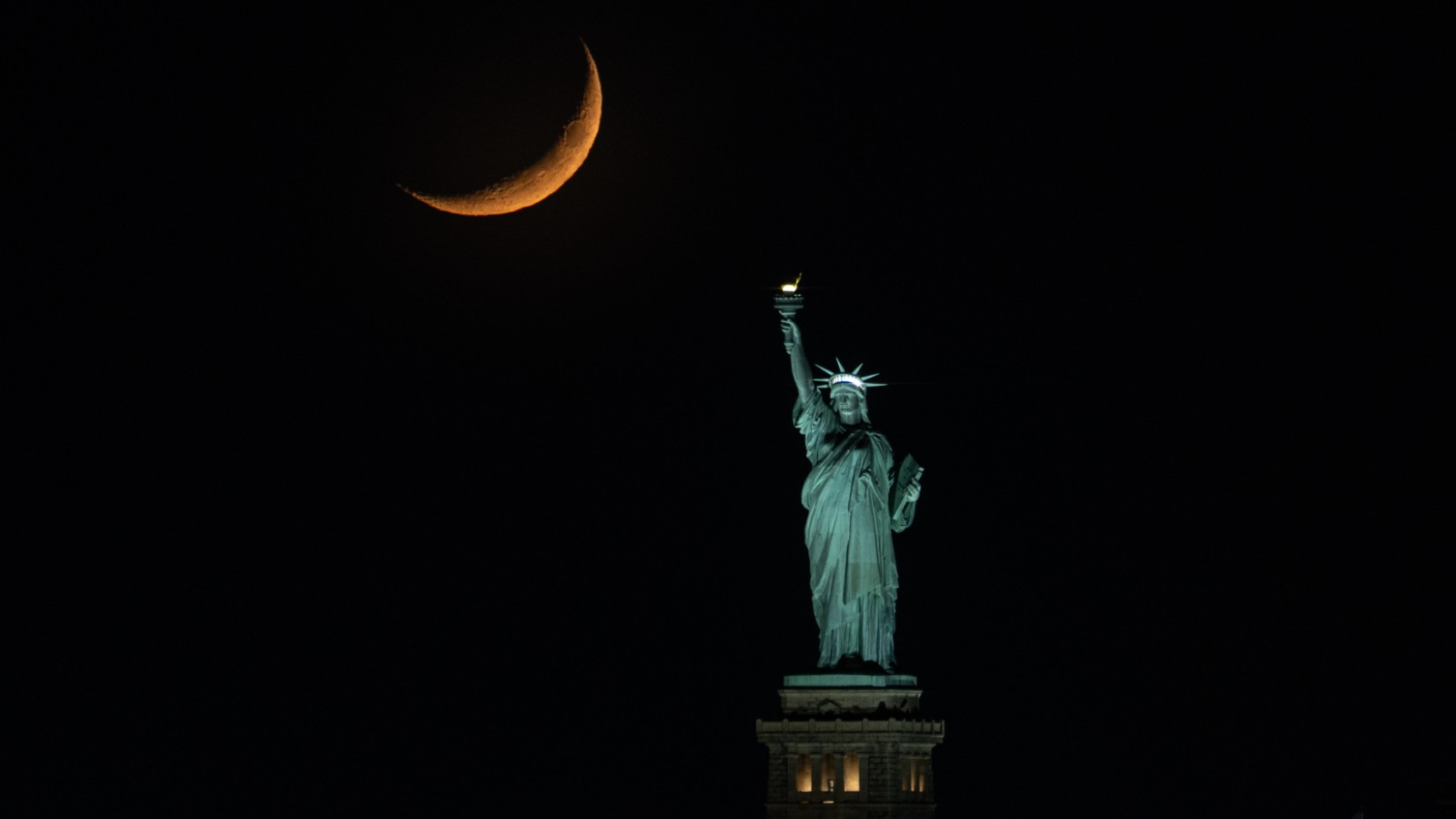The slender crescent moon will be positioned close to the bright star Spica at sunset on Aug. 27, but you’ll have to be quick to catch a glimpse of the cosmic duo before they follow the sun below the horizon!
Look to the west as the sun sets on Aug. 27 to find the 18%-lit waxing crescent moon a little over 15 degrees above the western horizon, with Spica — the brightest star in the constellation Virgo — positioned less than 6 degrees to the right of the lunar disk. Remember, the width of your middle three fingers held at arm’s length accounts for roughly 5 degrees in the night sky.
The moon and Spica will swiftly set a little over an hour and a half after sunset, with Mars positioned to their right, so be sure to find a location with a clear view of the western horizon to ensure that you get a good view of the fleet-footed pair.
Spica, which appears as a dazzling blue-white star to the unaided eye, is in fact a binary star system composed of two massive stellar bodies that orbit one another with a separation of just 11 million miles (18 million kilometers). Together, they shine more brightly than over 12,100 suns, but at a distance of 250 light-years they are easily outdone by the glow of the nearby crescent moon.
Turning a pair of 10×50 binoculars or a small telescope on the moon will reveal the presence of several prominent craters along the line separating night from day on the lunar surface, known as the terminator. The ancient lava plain Mare Crisium (Latin for the Sea of Crises) will also be visible as a dark oval in the upper section of the lunar crescent, with the sprawling expanse of Mare Fecunditatis (the Sea of Fertility) arrayed below.
Be sure to wait until the sun is completely below the horizon before attempting to find the moon with a telescope or binoculars, to avoid permanent damage to your vision. The coming days will see the moon travel away from Spica to sweep past the red supergiant star Antares the night before Earth’s natural satellite reaches its first quarter phase on Aug. 31.
Stargazers hoping to explore the majesty of the lunar surface for themselves should read our roundups of the best telescope and binocular deals, while those new to navigating the night sky should check out our guide to the top smartphone stargazing apps available in 2025.
Editor’s Note: If you capture a picture of the moon with Spica and want to share it with Space.com’s readers, then please send your photo(s), comments, name and the location of your shoot to spacephotos@space.com.
